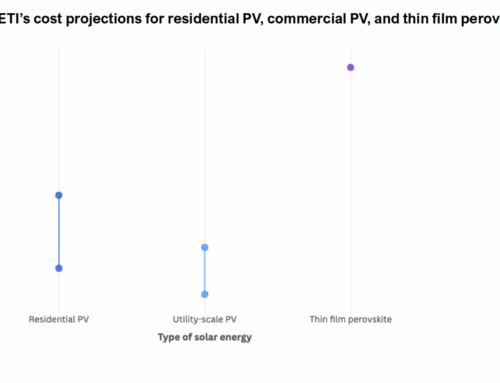WALKER: Bad Policies Lead to High Electricity Prices
November 24, 2025

concept of energy saving the meter of electricity with solar panels and a windmill money dollar bills 3d render on grey no shadow
Millions of Americans are upset and deeply concerned about their electric bills as of late, and rightly so. For many, it was a critical issue on Election Day this year, forcing candidates to clearly outline their energy platforms.
Retail electricity prices have increased faster than the rate of inflation since 2022; that is expected to continue through 2026.
However, it applies only to certain states, many of which lie in New England, the Mid-Atlantic, and the West Coast. Residents in these regions are suffering at the hands of bad policy decisions.
New research from Lawrence Berkeley National Laboratory finds that one of the biggest culprits for these recent trends is the Renewable Portfolio Standard (RPS): state-level policies that mandate a minimum share of electricity sold by utilities come from renewable sources. An RPS “will often raise retail prices, especially in states with more costly renewable energy supplies.” When RPS targets exceed what the market would otherwise supply, utilities must purchase more expensive renewable energy or buy Renewable Energy Credits to comply.
Incidentally, most states with an RPS are experiencing the highest electricity prices in the nation.
As more states commit to higher levels of renewable energy requirements, more utility companies are requesting rate increases. Utility rate requests set a record in 2023 for the third straight year, asking for tens of billions of dollars to pay for their “energy transition” spending. Requests and approvals total more than $34 billion in the first three quarters of 2025, impacting 124 million billpayers.
The prices currently being implemented are attributed to previously enacted RPS policies. California, Nevada, and several of the New England and mid-Atlantic states are not just incorporating significant portions of renewables but aggressively pursuing net-zero and carbon-free goals.
The “hidden costs” of solar and wind are often conveniently not disclosed to the public nor included in cost analyses. But the intermittent nature of the two requires backup sources, battery storage, and/or grid buildout, making renewable energy up to 12 times more expensive than natural gas. Wind and solar are not as economical as we are led to believe.
Concurrent with most clean energy programs are the closures of reliable and dispatchable coal, natural gas, and nuclear plants. For instance, New England became the second “coal-free region” in the U.S. (following the Pacific Northwest) last year; California is set to close its last coal plant this month. These coal closures are associated with spiking electricity prices. Maintaining coal online and/or stored onsite (the only source capable of such) stabilizes load generation under any circumstance, keeping prices low.
Additionally, gas-to-coal switching has historically helped balance the gas market during periods of high prices. As the coal fleet shrinks, there is less flexibility; higher prices will result.
Closing natural gas plants, in addition to coal, decreases the overall power supply available. New England states are further strangled by New York’s refusal to allow additional gas pipeline construction within its borders. Some of those states are forced to import electricity, often at premium prices.
Nuclear power plant closures are also linked to spiking electricity prices. New Yorkers, for instance, saw prices increase more than 80 percent upon Indian Point’s shuttering just a few years ago; researchers predict even higher prices for the state if the remaining plants close. Nuclear has extremely low variable costs; plant closures have forced states to replace this generation with higher-priced and often volatile sources, including natural gas.
Rapid data center growth and the electrification of transportation and industrial processes may share some blame for increased energy prices, but several states have and continue to inadequately prepare for increased demand. Insufficient power supply for the unprecedented surge in electricity needs is straining grids, causing shortfalls and leading utilities to increase prices and/or institute pricing structures to manage or discourage consumption.
Much of the electricity price hikes that states are experiencing are self-inflicted. Stringent RPS policies coupled with plant closures are a recipe for soaring electric bills.
Those who choose to maintain the status quo of energy policies will be disappointed. New Jersey’s governor-elect, for instance, plans to double down on the same draconian energy measures that largely contributed to the state’s skyrocketing rates. It is difficult to see those circumstances changing anytime soon.
Rather, policies that embrace dispatchable and abundant energy facilitate affordable electricity.
Search
RECENT PRESS RELEASES
Related Post


